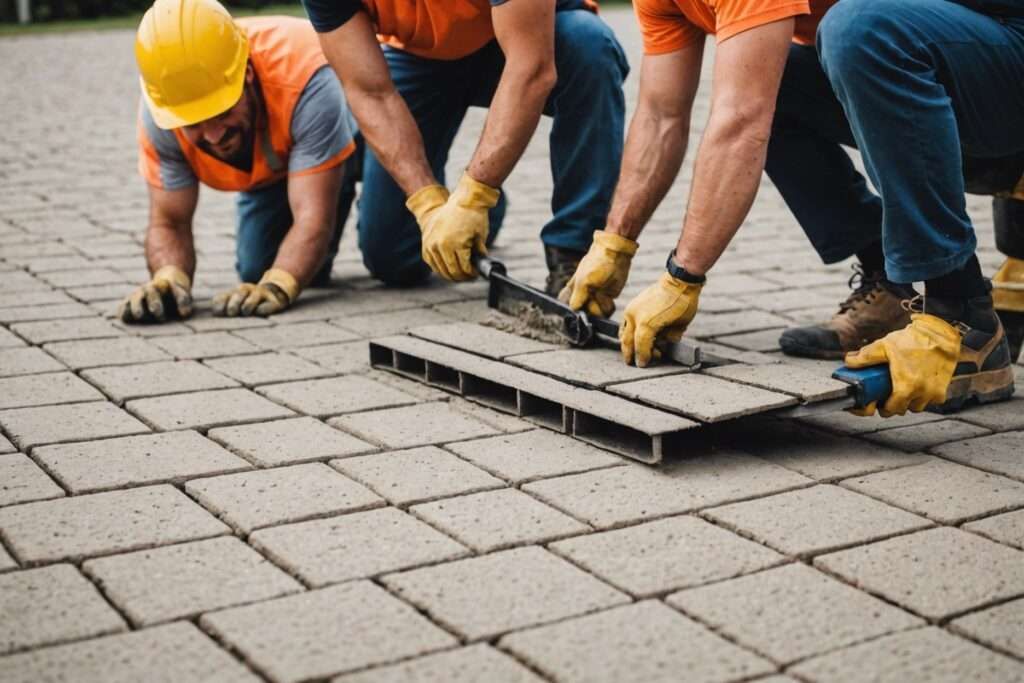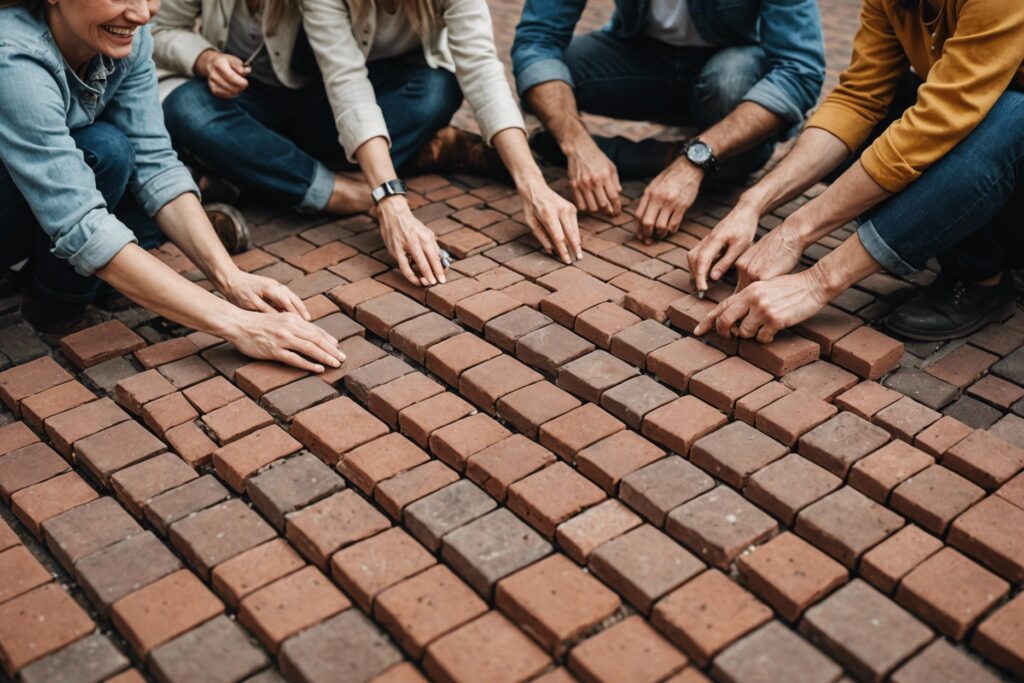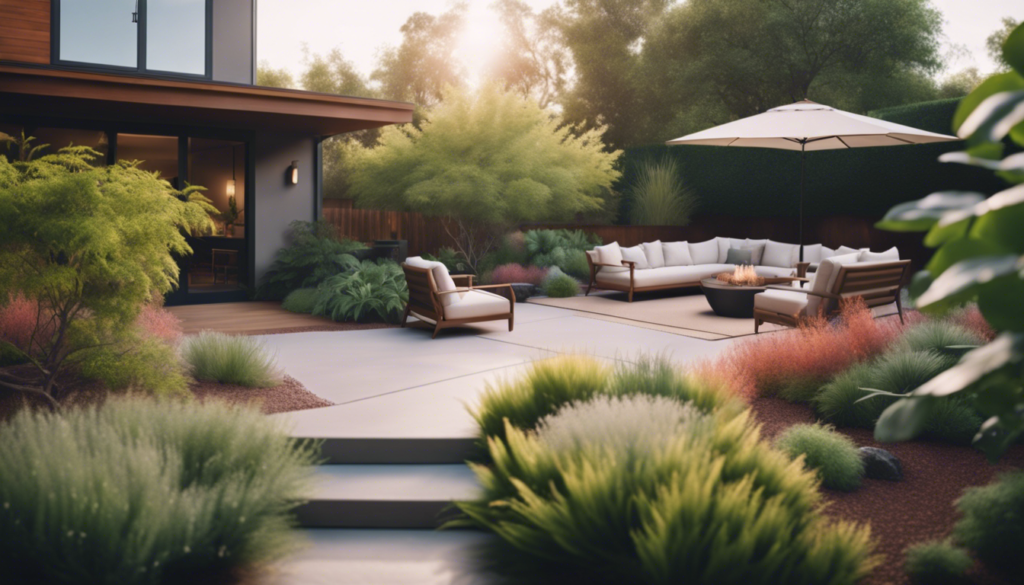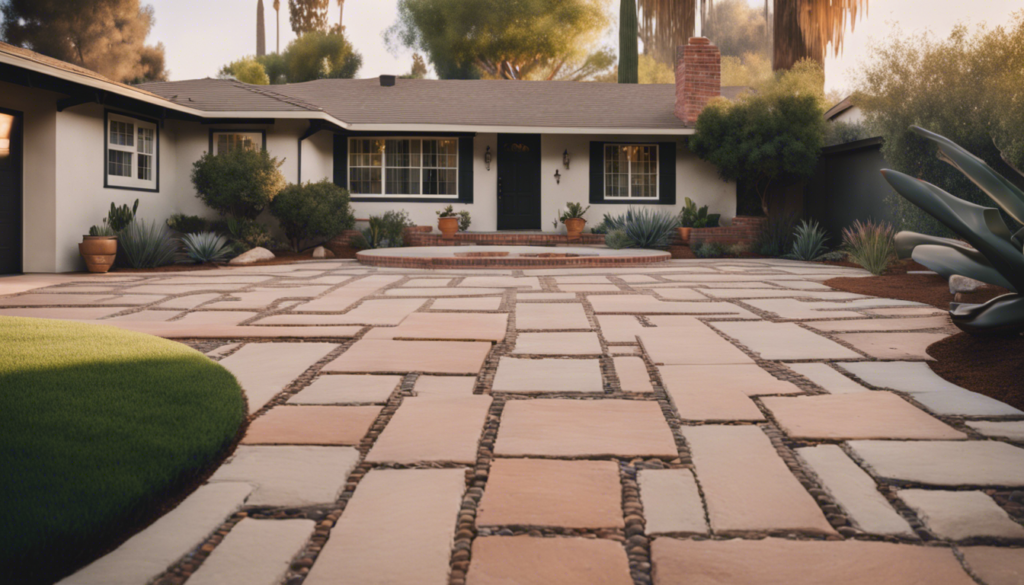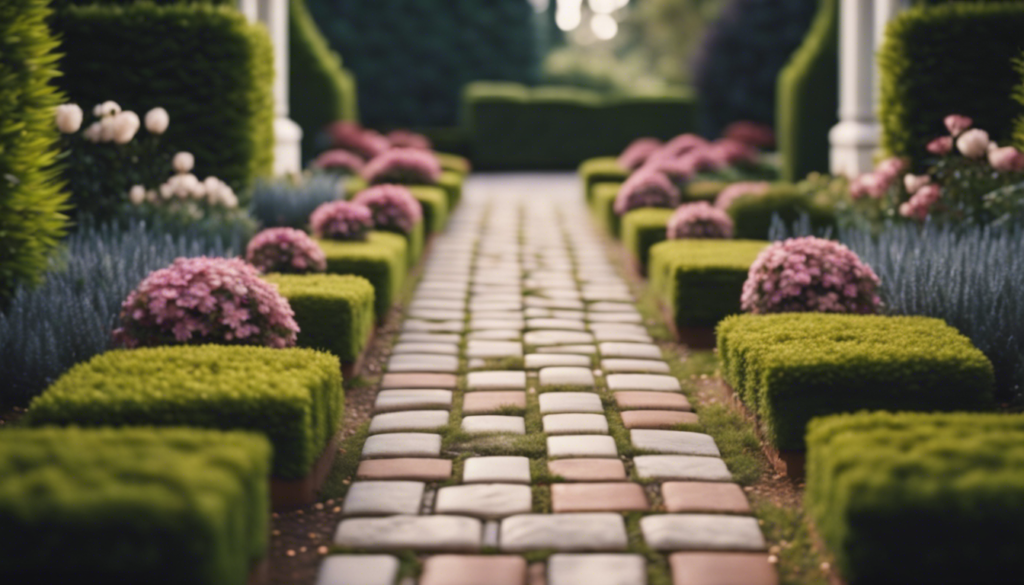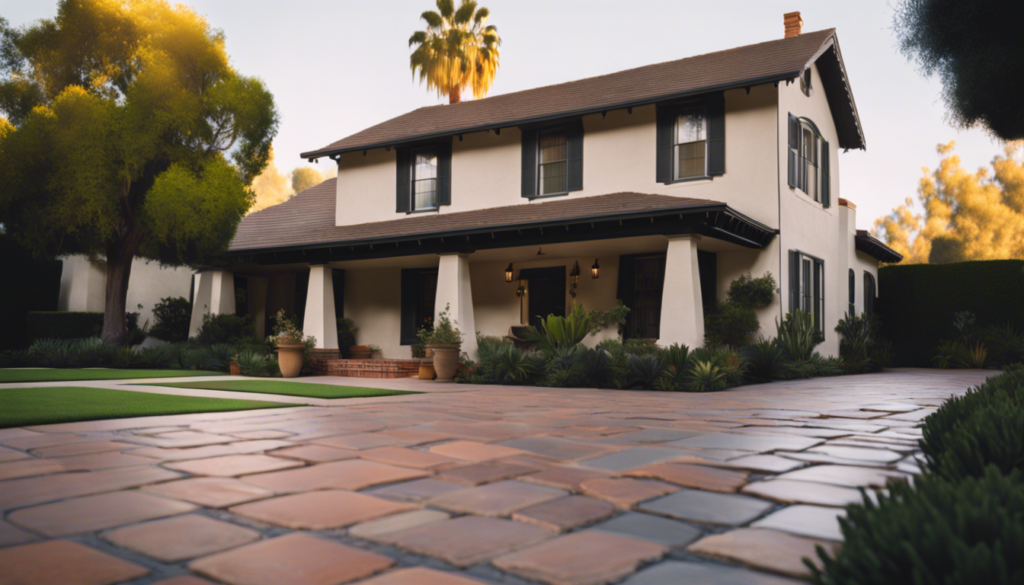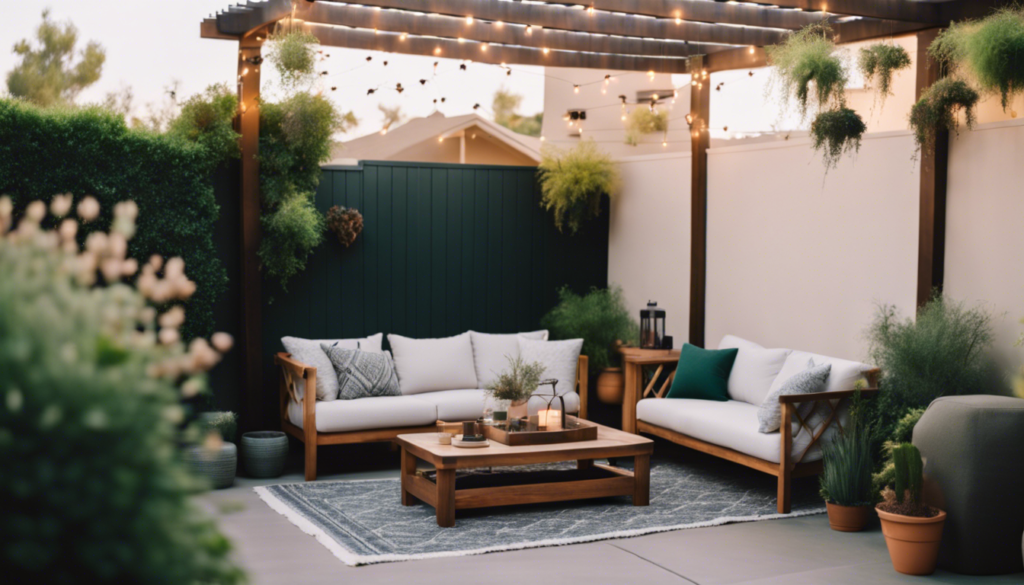Polymeric sand is the most effective option for securing joint sand in paver installations, as it hardens upon wetting and binds strongly to resist erosion, weed growth, and pests. For best results, ensure that the pavers are dry, sweep the sand into the joints thoroughly, and activate the sand with a light mist of water […]
Read More
To remove oil and grease stains from pavers, apply a homemade poultice made of flour, hydrogen peroxide, and mineral spirits or use commercial-grade cleaners for more stubborn stains. For hard water and rust, create a paste using white vinegar and baking soda or lemon juice and baking soda, apply to the stain, let it sit, […]
Read More
Permeable pavers are eco-friendly, absorbing rainwater to reduce runoff and pollution, whereas concrete pavers are durable, strong and offer more design versatility for high traffic areas. Both types have environmental advantages, but choice depends on local climate and specific project needs. Introduction to Paver Types Pavers are essential for creating durable surfaces like driveways, patios, […]
Read More
To install a fire pit in your Southern California backyard, first decide between a wood-burning or gas-operated style considering factors like cost, maintenance, and environmental impact. Ensure the installation complies with local regulations, uses fireproof materials, is placed appropriately away from structures, and consider using non-combustible materials for safe and legal setup. Introduction to Fire […]
Read More
The top three brick paving patterns for driveways include the durable and visually appealing Herringbone pattern, the classic and easy-to-install Basketweave pattern, and the simple yet sturdy Running Bond pattern. Each pattern offers unique benefits and can be tailored to match different home styles and driveway sizes. 1. Herringbone Pattern The Herringbone pattern is a […]
Read More
To avoid invasive plants in your patio, choose native or non-invasive species that won’t harm local ecosystems. Regularly check and manage your garden to prevent fast-growing invasive species from taking over and displacing native plants. Introduction to Invasive Plants in Patio Monrovia Invasive plants are not native to an area but can spread quickly and […]
Read More
The Charm of Pasadena’s Historic Districts Pasadena’s historic districts are a window into the city’s rich past, showcasing architectural beauty that tells the story of its heritage. The city values its history deeply, launching projects like “Historic Places Pasadena: Completing Our Story” to identify and preserve significant sites. This initiative, backed by the City Council, […]
Read More
In Glendale’s unique climate, selecting pavers that offer both heat resistance and freeze-thaw durability—like light-colored concrete, travertine, and marble—is crucial for outdoor spaces. These materials not only cope well with extreme temperatures but also contribute to a cooler, more sustainable environment by reflecting sunlight. Understanding Glendale’s Climate and Its Impact on Pavers Understanding Glendale’s climate […]
Read More
Restoring pavers in Pasadena’s historic homes is crucial for maintaining the area’s charm and history for future generations. This process involves assessment, cleaning, repair, and protection, ensuring these historic districts remain safe and welcoming. Pasadena’s Commitment to Historic Preservation Pasadena shows its dedication to keeping its history alive through a project called “Historic Places Pasadena: […]
Read More
For a modern Glendale patio, consider concrete pavers for durability and style, and enhance the space with water features or privacy screens for tranquility and seclusion. Incorporating these elements can transform your patio into a sophisticated outdoor retreat. Understanding Glendale’s Climate and Its Impact on Outdoor Living Glendale is taking big steps to deal with […]
Read More

